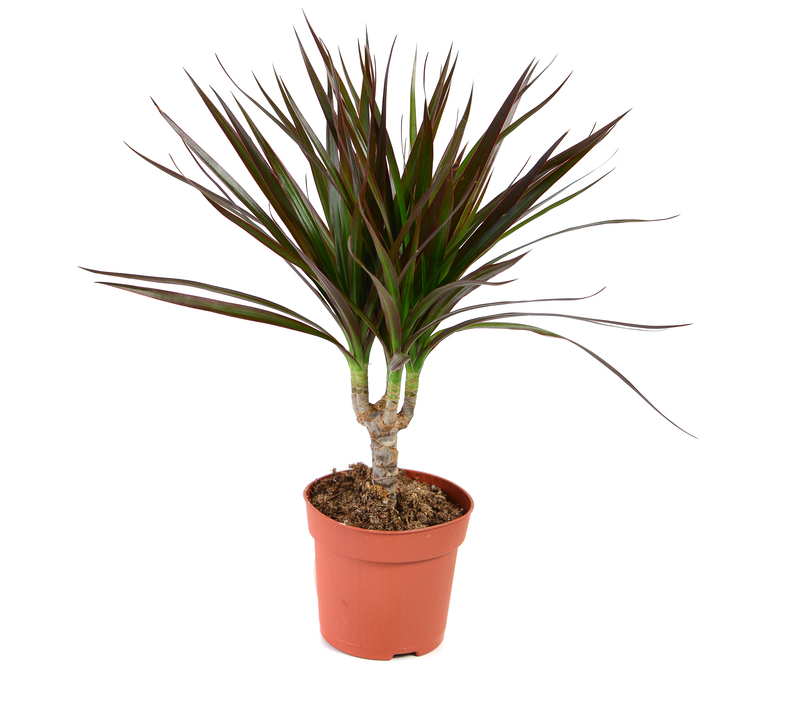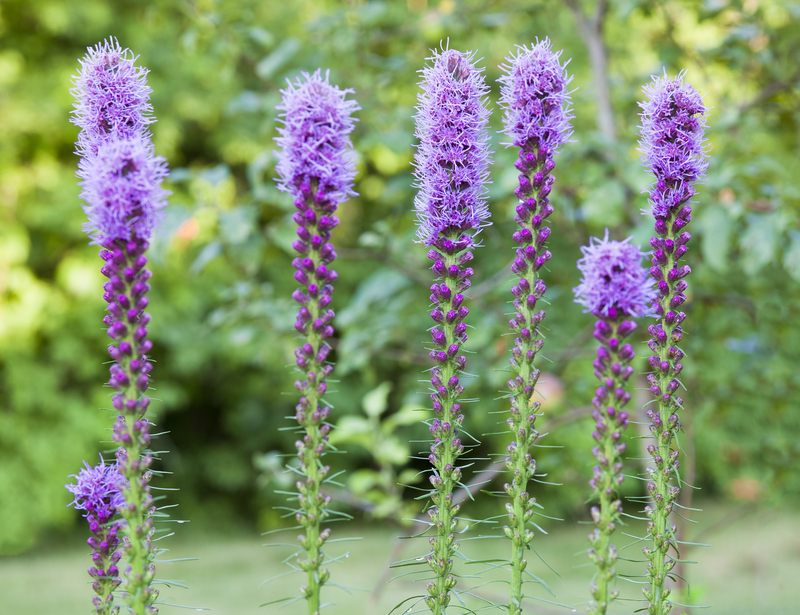Sowing Joy: Tips for Designing a Child-Friendly Garden
Posted on 15/06/2025
Sowing Joy: Tips for Designing a Child-Friendly Garden
Gardens are magical places that foster curiosity, creativity, and a love for nature, especially in young minds. Designing a child-friendly garden not only brings families together but also encourages lifelong learning, physical activity, and an appreciation for our environment. If you're looking to transform your backyard into a haven of fun and discovery, this comprehensive guide provides expert insight and actionable tips to help you sow joy in your garden.
Why Create a Garden for Children?
A child-centric garden provides so much more than just a place to play. It is a natural learning laboratory, a safe adventure playground, and a living canvas where kids can express themselves, observe life cycles, and take pride in nurturing living things. Here are some compelling reasons to design a garden especially for children:
- Encourages Outdoor Activity: Engages kids in active play away from screens.
- Promotes Hands-on Learning: Teaches about plant biology, ecosystems, weather, and responsibility.
- Sparks Creativity: Offers a sensory-rich environment for imaginative play.
- Fosters Healthy Eating Habits: Inspires children to sample homegrown fruits and vegetables.
- Builds Confidence: Children take pride in what they grow and create.

Getting Started with Your Child-Friendly Garden
Before plunging into digging and planting, a little planning ensures that your kid-focused garden is both safe and stimulating.
1. Involve Children in the Planning Process
To truly sow joy, let your children be co-designers. Ask them about their favorite colors, scents, or garden creatures. Show them pictures and ideas, then plan together.
- Sketch together: Draw a blueprint using their input.
- Visit gardens or parks: Get inspiration and make note of what excites them.
2. Choose the Right Location
A child-friendly backyard garden must be easily accessible and visible from inside the home. This enhances safety and makes supervision easy. If you don't have a yard, container gardens on patios, balconies, or even indoor windowsills work beautifully, too.
Design Principles for a Stunning Kid-Friendly Garden
Let's delve into the essential design principles that turn a basic plot into an enchanting garden for kids.
1. Safety First
Children should be able to explore freely, so prioritizing safety is key.
- Non-toxic Plants: Avoid poisonous species such as foxglove, oleander, or castor bean. Choose edible plants, or check reputable lists for child-safe varieties.
- Smooth Paths and Surfaces: Use soft grass, bark mulch, or rubber mats to cushion small tumbles.
- Secure Boundaries: Fences and gates keep kids safely within the garden and wildlife out.
- Tool Storage: Keep sharp tools and chemicals locked away.
2. Incorporate Interactive Features
A child-centered garden design invites touch, discovery, and play. Integrating sensory and interactive elements keeps children engaged and helps them connect with nature on their own terms.
- Sensory Paths: Create winding trails using pebbles, sand, or wood chips that invite children to walk, jump, or run barefoot.
- Secret Hiding Places: Willow domes, teepees, or tunnels from sunflowers offer safe spots for imaginative play.
- Water Play: Simple fountains, splash pads, or shallow basins provide hours of chemistry and physics fun.
- Garden Art: Let kids decorate with painted stones, wind chimes, or self-made scarecrows.
3. Plan for All Ages
If your family includes toddlers and older children, design a child-friendly landscape with zones for varied interests:
- Sensory gardens--sandpits, herb beds, water features--for young explorers.
- Raised beds or miniature plots for independent planting as kids grow.
- Climbing and balancing areas for older, adventurous children.
Planting Ideas: The Best Flowers, Fruits, and Vegetables for Children
Choose low-maintenance, quick-growing, and visually appealing varieties to keep kids interested and motivated. Here are some top picks for your family-friendly garden:
Vibrant Flowers
- Sunflowers: Fast-growing and dramatic, perfect for summer competitions.
- Marigolds: Bright, resilient, and excellent for attracting pollinators.
- Nasturtiums: Edible flowers with peppery leaves, great for salads and snacking.
- Snapdragons: Bright colors and fun, dragon-shaped blooms.
Easy Edible Plants
- Cherry tomatoes: Sweet, bite-sized, and great for tiny hands.
- Strawberries: Kids love hunting and picking these delicious fruits.
- Peas and beans: Fast-growing and fun to shell right in the garden.
- Carrots, radishes, and lettuce: Quick harvest cycles and colorful roots make them favorites.
Engaging Herbs
- Mint and lemon balm: Fragrant, tough, and good for sensory play.
- Parsley and chives: Easy to grow and handy in the kitchen.
- Lavender: Beautiful, pollinator-friendly, and aromatic.
Pollinator Attractions
- Buddleia (Butterfly bush): Attracts butterflies for hours of observation.
- Milkweed: Supports monarch butterflies and other beneficial insects.
Activities to Foster Wonder in the Garden
Your garden for children is more than a planting site--it's an outdoor classroom and creative haven.
1. Nature-Based Crafts
- Leaf prints: Teach plant structures through fun art.
- Pebble painting and fairy houses: Decorate favorite garden nooks.
- Making wind chimes: Use found natural materials and old cutlery.
2. Garden Wildlife Safaris
- Bug hunts: Give children magnifying glasses and ask them to spot insects or worms.
- Bird feeding and watching: Hang feeders and keep a logbook for sightings.
- Butterfly and bee monitoring: Identify and count pollinators.
3. Science Experiments
- Measuring growth: Track plant height and create DIY bar charts.
- Weather stations: Use rain gauges, thermometers, and wind vanes.
- Compost critter studies: Examine worms and microbes enriching the soil.
4. Themed Garden Spaces
- Pumpkin patches for Halloween fun.
- Pizza gardens: Grow tomatoes, basil, and peppers for DIY pizza nights.
- Butterfly gardens: Create nectar-rich zones for wildlife and nature observation.
Practical Tips to Maintain a Joyful Children's Garden
Sustain a fun and inviting playful family garden with these practical suggestions:
- Use child-sized tools: Smaller rakes, trowels, and gloves make gardening accessible for little hands.
- Create set routines: Assign watering, weeding, and harvesting days to foster responsibility.
- Celebrate successes: Host small harvest festivals or garden parties to mark milestones.
- Make room for experimentation: Let kids plant mystery seeds or create their unique plant arrangements.
- Label everything: Use bright, illustrated plant markers for learning and organization.
Designing Child-Friendly Gardens in Small Spaces
Don't have a large plot? You can still design a delightful child-friendly garden in limited areas using:
- Vertical gardens: Stack planters and use trellises for climbing plants.
- Portable containers: Grow herbs, salad greens, or strawberries in pots, wheelbarrows, or recycled containers.
- Window boxes and hanging baskets: Involve every window and railing for growing space.
- Miniature gardens or fairy gardens: Add whimsy to tabletops and patios.

Sustainability and Eco-Friendly Choices
Children learn by example. Nurture a love for the environment with eco-conscious garden practices:
- Composting: Turn waste into garden nutrients.
- Rainwater harvesting: Use barrels and demonstrate the water cycle.
- Native planting: Reduce maintenance and support local wildlife.
- No chemicals: Emphasize natural pest control and organic growing.
- Wildlife-friendly features: Add bee hotels, bird baths, or log piles for biodiversity.
Conclusion: Sowing Joy for a Lifetime
A child-friendly garden design is more than an investment in your yard--it's a gift for your children's health, creativity, and future. By sowing joy through safe layouts, vibrant plant choices, playful features, and eco-conscious practices, you'll inspire wonder, wellbeing, and a green thumb in your children that lasts a lifetime.
Start small and remember: there is no "perfect" garden--only a space cracking open new discoveries each day. The greatest harvest will be the joy you plant and nurture together.
Are you ready to create your child's enchanted garden? Gather your gloves, choose your seeds, and start designing a child-friendly garden today. Happy gardening!

